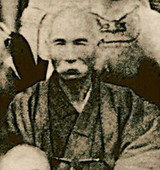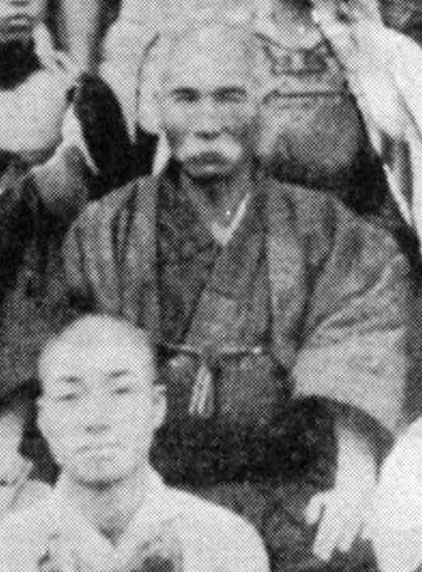“The Architect Of Modern Day Karate”

Anko Itosu 1831 – 1915
“The Architect Of Modern
Day Karate”
Yatsutsune (Anko) Itosu was born in the Gibo section of Shuri Okinawa in 1831. He was born to a prominent family and was well educated in the classics of Chinese literature.
Itosu is considered by many to be the father of modern karate, although this title is also given to Gichin Funakoshi because the latter spread karate throughout Japan.
Itosu began his tode (karate) study under Nagahama Chikudun Pechin. His study of the art led him to Sokon Matsumura. Part of Itosu's training was makiwara practice. He once tied a leather sandal to a stone wall in an effort to build a better makiwara. After several strikes, the stone fell from the wall. After relocating the sandal several times, Itosu had destroyed the wall.
It is through Itosu’s efforts that many basic exercises and forms were simplified and organized into a curriculum suitable for the mass instruction of students.
In 1901, he was instrumental in getting karate introduced into Okinawa's schools. He created and introduced the Pinan forms (Heian in Japanese) as learning steps for students, because he felt the older kata were too difficult for school children to learn. The five Pinan forms were (allegedly) created by drawing from two older forms kusanku and chiang nan. Itosu is also credited with taking the large Naihanchi form (tekki in Japan) and breaking it into the three well-known modern forms. That same year he began instructing at the Shuri Jinjo Primary School, Okinawa, and then on to the Dai Ichi middle school as well as the Okinawa prefecture Mens Normal School in 1905. It was here he developed a systematic method of teaching karate techniques which is still in practice.
Itosu's style of karate, Shorin-ryu, came to be known as Itosu-ryu in recognition of his skill, mastery, and role as teacher to many. One of the greatest testaments to Itosu is that he developed a group of superb students who in turn went on to promote the Karate art. The group included: Kentsu Yabu, Chomo Hanashiro, Jiro Shiroma, Chojo Oshiro, Kenwa Mabuni, Gichin Funakoshi, Chosin Chibana, Moden Yaabiku, Motobu Choki.
In October 1908, Itosu realized it was time for Karate to reach beyond the shores of Okinawa to the heart of Japan. It was to this end that he wrote his famous letter of Ten Precepts (Tode Jukun) to draw the attention of both the ministry of education as well as the ministry of war.
‘The Ten Precepts of Karate’ originated in the Shorin-Ryu school and the Shorei-ryu school, brought to Okinawa from China. They were developed by Itosu as a great benefit to the Japanese nation and its military. However, the application of the precepts are as relevant to today’s karate as they were when Itosu started teaching the kata. He realized that the discipline of the kata, the control of mind and body, and the adaptation to all body types and to all individuals, led to self-development and character-building, and was the essence of karate as a martial art. He taught his students and teachers that Karate is a way of life, and they in turn learned to embrace that truth.
Yasutsone (Anko) Itosu died on January 26, 1915. His disciple Gichin Funakoshi was instrumental in continuing the spread of modern Karate, Shorin-ryu and, later, GojoRyu into Japan, and worldwide as a way of life.
